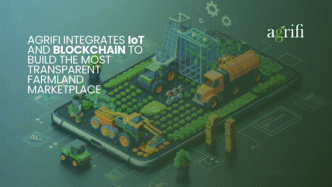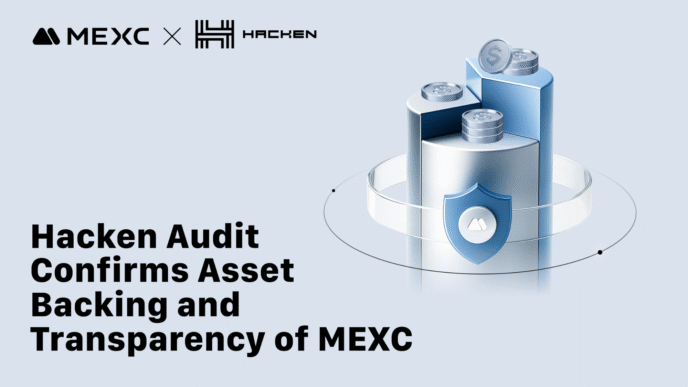Every year, it feels like technology is moving faster than ever. If you blink, you might miss the next big thing. That’s why we put together this top 10 technology trends PDF for 2025. It’s a quick way to get up to speed on what’s coming, from smarter AI to new ways of keeping data safe. Whether you work in tech or just like to keep an eye on what’s next, this list will help you understand the big changes ahead. Download it, share it, or just use it to impress your friends at your next get-together.
Key Takeaways
- Agentic AI is set to become more independent, helping people and businesses by making decisions and taking action on their behalf.
- Post-quantum cryptography will be important for keeping data safe as computers get faster and more powerful.
- Spatial computing will blend digital and real worlds, making things like virtual meetings and training more interactive.
- AI governance platforms will help companies use AI responsibly and keep up with changing rules and expectations.
- Energy-efficient computing and hybrid systems will shape how we use and save power, making technology both smarter and greener.
1. Agentic AI
Agentic AI is taking on a life of its own with platforms that let digital agents interact, decide, and take action on our behalf, often without much human help. These tools aren’t just chatbots replying to basic questions—they’re advanced, personified systems that can manage complex customer requests, handle company tasks, and even represent brands in public-facing interactions. The big shift with agentic AI is that technology isn’t just working behind the scenes anymore; it’s becoming a direct representative for businesses and individuals.
Here’s how agentic AI stands out:
- It gives businesses a way to personalize every customer interaction, using unique personalities or even mascots as the digital “face” of the company.
- Agents can run on a company’s website or join conversations on other chat platforms, adapting their approach for each user.
- Over time, these systems gather knowledge and adjust their actions, building more trust and becoming better at responding to individual needs.
But there’s a catch: if companies use generic agents, their unique brand voice could easily get lost. That’s why many organizations are now focusing on developing personified AI agents, aiming to make every interaction both familiar and memorable. If done right, these intelligent platforms could actually help build customer trust and loyalty.
Recent surveys highlight the impact this tech is already having with businesses:
| Metric | Percentage |
|---|---|
| Executives say AI agents will reinvent digital system-building | 77% |
| Say digital ecosystems must support AI agents as much as humans | 78% |
| Believe AI agents will improve flexibility in digital architecture | 48% |
| Cite enhanced innovation due to agents | 43% |
For early adopters, it’s important to identify which opportunities will have the most impact, while those just starting can begin experimenting internally. If you’re taking it slower, now’s a good time to prep your systems so you’re not left behind when agentic AI really goes mainstream—which could be sooner than anyone thinks. Not too long ago, even basic household robots felt futuristic, but innovations like human-like robots with advanced features show how quickly things change when digital agents get smarter and more visible in daily life.
2. Post-quantum Cryptography

Right now, regular encryption is everywhere—protecting your bank logins, online buys, even your private texts. But quantum computers are on the horizon, and they could break a lot of the codes we depend on today. Post-quantum cryptography (PQC) is all about coming up with new ways to keep digital secrets safe—even if someone gets their hands on a quantum computer.
It’s not just about swapping one piece of software for another, though. PQC is a major shakeup. Here’s why it’s such a big deal:
- Most websites, apps, and devices use public-key encryption that quantum computers could crack pretty easily.
- New PQC algorithms need to be fast, safe, and work on everything—from your phone to big cloud servers.
- Businesses and governments are under real pressure to test out these new tools, rewrite parts of their code, and get ahead of the risks before quantum computers become mainstream.
There are a few sticky problems with PQC that keep everyone on their toes:
- Compatibility: Swapping out old algorithms isn’t plug-and-play; some apps just won’t work the same way.
- Performance: Some new methods slow everything down, or need a lot more memory.
- Testing: The tech is shiny and new, so no one’s 100% sure how it’ll hold up in the wild.
Still, no one can afford to wait. Data thieves can grab encrypted info now and try to break it years down the road when quantum is ready. This field is moving fast, so get used to hearing about PQC in security news and tech updates for the next few years.
3. Spatial Computing
Spatial computing is coming into everything we do, mixing the digital and real worlds. It’s not just about cool VR goggles anymore—now, our devices pick up on our location, our gestures, and even our physical spaces, turning the world into an interactive map. Spatial computing blends technologies like augmented reality, virtual reality, sensors, and smart environments to change how we live, work, and play.
It’s popping up everywhere, from hospital surgery training simulators to virtual furniture showrooms—try before you buy, right in your living room. According to concepts, tools, and technologies that enhance lives, spatial computing goes beyond entertainment, improving how we understand spaces and places.
You’ll spot spatial computing at the heart of these changes:
- Doctors practicing complex surgeries in a risk-free virtual world.
- Shoppers testing out products in their real bedrooms before hitting purchase.
- Builders overlaying blueprints directly onto worksites with smart glasses.
But, it’s not perfect yet. A few things to think about:
- Headsets and smart glasses are pricey and sometimes clunky.
- Interfaces can be confusing if you’re not techy.
- There are big questions on privacy—especially when your living room is mapped by a third party.
Still, as the tech gets better and cheaper, spatial computing will slip right into daily life—whether we’re ready for it or not.
4. AI Governance Platforms
AI Governance Platforms are turning into a must-have for companies relying on artificial intelligence. They help you keep track of how AI systems are behaving so that their decisions are legal, fair, and in line with company rules. These platforms work behind the scenes, checking whether the AI is following ethical guidelines, keeping records of its decisions, and making sure everything is transparent enough for audits. It’s about building trust—not just with customers, but with employees too.
Here’s what a good AI governance setup usually covers:
- Clear rules about where, when, and how AI is allowed to make choices.
- Tools that help explain the reasoning behind automated decisions (so someone’s always accountable).
- Alerts for when the AI goes off-script or picks up biased habits.
Executives feel the pressure to get this right. The rules for AI change from one country or industry to the next, and it’s easy for companies to get tripped up if they don’t have strong governance tools.
Here’s a quick look at survey data from industry leaders:
| Percentage of Executives Agreeing | |
|---|---|
| Need digital systems for both humans and AI agents | 78% |
| Believe AI will remake digital systems | 77% |
| See trust as key to automation’s benefits | 75% |
In short, effective AI governance makes sure your new smart tech doesn’t cross a line or cause problems down the road. It’s less about locking things down, more about building systems you can trust as the rules keep shifting every year.
5. Ambient Invisible Intelligence

Ambient invisible intelligence is one of those ideas that sounds pretty wild at first, but it’s already sneaking its way into daily life. This trend is all about tech becoming so smoothly woven into the environment that it fades out of sight, working in the background to make things easier without you even noticing. For example, think about real-time item tracking in warehouses or stores, where every product can report its history and identity. That’s not science fiction—it’s happening now, powered by smart sensors and tiny embedded tags.
Here are a few things that ambient invisible intelligence is shaking up:
- Objects (like retail items, medicine bottles, or industrial parts) can have smart tags that give real-time updates, making inventory headaches a thing of the past.
- It can make spaces more intuitive—like adjusting lights and temperature based on who’s in the room, or activating equipment when a person steps close.
- It opens up new possibilities for tracking supply chains, so you know exactly where stuff came from and what happened to it along the way (think of it as a permanent, digital receipt).
Of course, it’s not all smooth sailing. Privacy is a big deal. People might want to turn off tags or block certain sensors to keep their data to themselves, which could limit some of the benefits. Companies setting this up need permission before collecting too much info, and they have to design systems so that you can easily opt out if you want.
Let’s look at a quick table showing some everyday areas where ambient intelligence is starting to make a difference:
| Area | Example Impact |
|---|---|
| Retail | Smart shelf inventory |
| Home Automation | Adaptive lighting and heating |
| Healthcare | Medication tracking |
| Manufacturing | Equipment status monitoring |
Some people are already asking how new gadgets, like the iPager device, might fit into this world. These sorts of products could end up being a bridge—connecting more things quietly and making invisible tech work even harder behind the scenes. It’ll be interesting to see just where all this goes by the end of 2025.
6. Polyfunctional Robots
Polyfunctional robots are changing fast, and I think it’s wild how far they’ve come. These are machines that can swap roles quickly—they’re not just picking up boxes in warehouses or assembling car doors. Instead, they’re moving toward handling many different jobs, often in unpredictable environments. Most people don’t realize that new advances are letting robots leave the factory and step into hospitals, hotels, and even our homes.
Here’s what sets polyfunctional robots apart:
- They can take on more than one task without physical modifications, thanks to smart software.
- With foundation models and large language models (LLMs), these robots can follow natural instructions like "bring me a drink" or "sort these tools."
- Generalist robots are getting closer to human-level flexibility, so instead of being replaced every time a job shifts, businesses keep one adaptable machine that grows with their needs. The change is huge—74% of executives see the value in robots that adapt and learn, and 80% think being able to talk to robots will make folks more comfortable working alongside them.
Here’s a quick look at the perceived benefits and key concerns:
| Benefit | Description |
|---|---|
| Faster ROI | Deploy robots without changing infrastructure |
| Scalability | Use across many roles and settings |
| Human-robot collaboration | Work with, not just instead of, people |
| Challenge | Description |
|---|---|
| High initial costs | Cutting-edge tech isn’t cheap (yet) |
| Security risks | More autonomy can create new vulnerabilities |
| No price/function standards | The market hasn’t settled on baselines |
Practical examples already include warehouse robots that aren’t just shelving goods, but also delivering, restocking, or cleaning. Medical robots now assist surgeons, then roll out to monitor vital signs. Even airports are trying autonomous wheelchairs to help travelers.
According to market research firms, polyfunctional robots are set to transform several industries in 2025. Robots with adaptable bodies and "brains" might sound futuristic, but they’re popping up in everyday settings. For businesses starting out, partnering with experienced robotics companies or just observing the landscape can help avoid rookie mistakes. The move to polyfunctional robotics won’t be smooth for everyone, but ignoring it means missing out on machines that can learn, shift gears, and actually make day-to-day life a bit easier.
7. Disinformation Security
Disinformation security is rising fast as a priority in 2025, and honestly, it makes sense. We’ve all seen how quickly rumors, fake news, and deepfakes can spread online, and it’s not just annoying—it can have real consequences for people and organizations. With AI-generated content getting more sophisticated, protecting information accuracy and trust has turned into a high-stakes game. According to Gartner’s analysis, there’s a shift toward making sure digital communications are reliable and that people know what to trust online.
So, what exactly are folks doing about it? It goes beyond simple fact-checking:
- Establishing new layers of identity verification (think digital watermarks, real-time story validation)
- Using adaptive risk scoring to keep tabs on accounts that might be compromised
- Recognizing and tracking fast-moving harmful narratives that could impact brands or even public safety
Tackling disinformation isn’t a “set it and forget it” thing. It means working with a mix of technologies and, yep, real human teams who are constantly learning and updating their strategies. The payoff? Less fraud, fewer fake accounts, and a safer online scene for everyone. In short, disinformation security is about building and keeping trust—something that’s getting harder, but also way more important as AI continues to change the digital landscape.
8. Energy-Efficient Computing
It’s no secret that technology keeps growing, and it uses a lot of electricity. These days, everyone is looking for ways to keep computers running faster while using less power. Energy-efficient computing is all about building smarter hardware, writing better code, and sometimes even plugging everything into renewable energy sources.
Here are some things that are changing:
- Companies are designing chips and servers to sip power instead of gulp it down.
- Folks are switching to cloud services that promise lower carbon footprints.
- Programmers are now paying attention to how much electricity their code sucks up.
Why does this matter? Big firms keep getting pressure from all sides—governments, investors, and customers—to take climate change seriously. And let’s be real, nobody wants their energy bill climbing even higher. On the flip side, jumping into this space isn’t simple. It means buying new stuff, learning new tricks, and sometimes paying more at first while everyone figures out the green energy puzzle.
Here’s a quick table just to show how much power different computing platforms can eat up:
| Platform | Power Use (Watts) | Typical Use Case |
|---|---|---|
| Laptop | 15-45 | Everyday office tasks |
| Desktop | 50-250 | Home/office, gaming |
| Server | 350+ | Data centers, business |
| Specialized AI | 1000+ | AI training, research |
Old computers just weren’t built for today’s power squeeze. Now, everyone from hobbyists to big IT bosses has to think about efficiency, not just speed. It’s one more thing to keep track of, but the payoff—less waste, smaller bills—will be worth it.
9. Neurological Enhancement
Up until now, when people talked about hacking brains, it was just a joke on science fiction shows. But now? We’re seeing real movement in tech that aims to boost memory, focus, or even physical control by plugging into our minds. The wild part is, this isn’t all hypothetical anymore. Research on brain-computer interfaces (BCIs) is serious business, and the numbers back it up: the BCI market is expected to grow from $2.41 billion in 2025 up to $12.11 billion by 2035, with more advanced signal processing pulling in the biggest gains (brain-computer interface market).
Here’s what’s coming up fast in neurological tech:
- Tools that read or even stimulate brain activity to help people recover from injuries or brain diseases.
- Devices designed for learning or work that could, in theory, let you process info faster or concentrate better.
- Gadgets (still mainly in university labs) that could one day ‘type’ thoughts directly from your mind.
The tech promises safer environments, gives older folks more work options, and personalizes education in ways that were just dreams a decade ago.
This all sounds amazing, but let’s not pretend it’s all easy. Implanting hardware in or near the brain is risky, can be invasive, and doesn’t always work seamlessly. Early models face big moves in security and ethics—tough questions about privacy and tweaking someone’s sense of what’s real. Costs are high, tech is still developing, and mobile options are super limited right now. But if these barriers start to crumble, expect to see more of this—both in medical clinics and, maybe someday, in your own home office.
10. Hybrid Computing
Hybrid computing is becoming more common now, and honestly, it feels like we’re finally getting better at working with both old and new tech at the same time. This approach means combining different ways to process, store, and move data to try and solve complicated problems faster and more efficiently. It’s sort of like having a toolbox with all sorts of gadgets—sometimes you grab the power drill, sometimes you just need a screwdriver.
What makes hybrid computing special? Here are some things that stand out:
- It mixes cloud-based and on-premises systems, letting companies keep sensitive data safe while still using the cloud for heavy lifting.
- You get the ability to switch between resources when performance matters most—kind of like toggling between low gear for hills and high gear for cruising.
- New tech, like AI processors and quantum modules, can run alongside existing, more traditional servers to boost what’s possible.
But, it’s not all easy. There’s complexity, high cost, and you need people who understand how all these parts fit together. Plus, with so many moving pieces, things can go wrong, and keeping everything secure is a real headache. If you’re interested in what’s shaping the next year in tech, see how hybrid approaches ranked in this analysis of emerging technologies.
Table: Typical Hybrid Computing Combinations
| Component 1 | Component 2 | Use Case Example |
|---|---|---|
| Cloud AI | Local Data Center | Real-time data analytics |
| Quantum Module | Traditional Server | Finance modeling |
| Edge Device | Cloud Storage | IoT-based monitoring |
Hybrid computing is still pretty new for most companies, so expect plenty of growing pains as more people give it a try. The systems are powerful, and they might even feel a bit overwhelming to set up, but they could change how businesses get the most out of their data and tech resources.
Conclusion
So, that’s a wrap on the top 10 technology trends for 2025. It’s a lot to take in, honestly. Every year, it feels like things are moving faster—AI is everywhere, robots are getting smarter, and even our privacy is changing with all this new tech. If you want to keep up, downloading the PDF is a good place to start. It breaks things down in a way that’s easy to understand, even if you’re not a tech expert. Whether you’re running a business or just curious about what’s next, these trends are going to shape the way we live and work. Take some time to read through, think about how these changes might affect you, and maybe even share it with a friend. The future’s coming, ready or not.
Frequently Asked Questions
What are the top 10 technology trends for 2025?
The top 10 technology trends for 2025 are: Agentic AI, Post-quantum Cryptography, Spatial Computing, AI Governance Platforms, Ambient Invisible Intelligence, Polyfunctional Robots, Disinformation Security, Energy-Efficient Computing, Neurological Enhancement, and Hybrid Computing.
Why is Agentic AI important?
Agentic AI is important because it can make decisions and act on its own to help people or businesses. This means less manual work and more smart help from technology.
How does Post-quantum Cryptography keep data safe?
Post-quantum Cryptography uses new ways to protect information so that even super-powerful quantum computers can’t break the codes. This helps keep personal and business data secure in the future.
What is Spatial Computing and where is it used?
Spatial Computing mixes the digital world with the real world using things like virtual reality and augmented reality. It is used in games, education, healthcare, and shopping to make experiences more interactive and real.
What is meant by Ambient Invisible Intelligence?
Ambient Invisible Intelligence is technology that works quietly in the background. It helps make everyday life easier by sensing and reacting to what’s happening around us, without us needing to see or control it directly.
How can I use these technology trends in my school or business?
You can use these trends by learning about them, thinking about what problems they can solve, and planning how to use them in your work or studies. For example, using AI to help with tasks or energy-efficient computers to save power and money.












